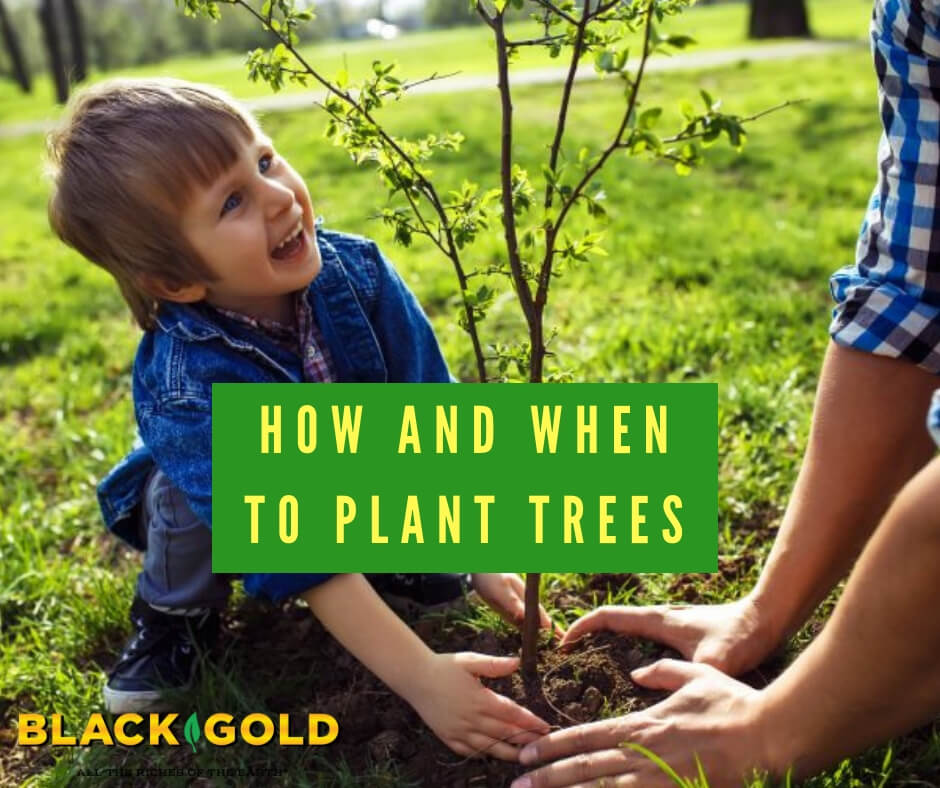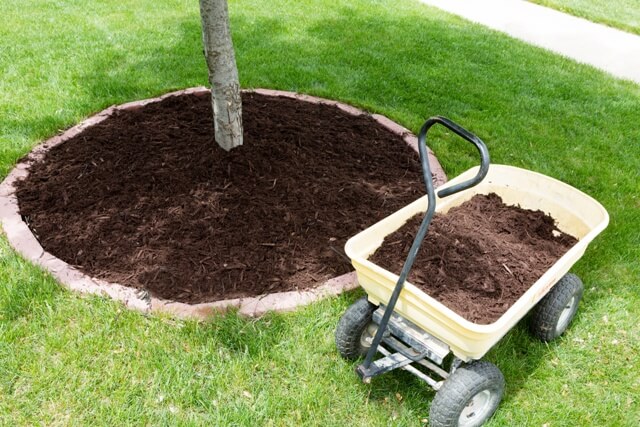
Springtime is tree planting time. Planting trees early in the season, as soon as the soil warms, gives new trees a whole season to set deep roots and top growth. (This is especially the case with marginally hardy trees.) But tree planting is only as good as your planting method and summer care. Here are seven steps for planting trees right!
Step 1: Select a Good Tree
First, choose a tree that is hardy to your growing area. Then choose the most perfect specimen you can find. A tree is a long-term investment, so buy yours at a quality garden center or nursery. Choose a tree free of any signs of bark damage that could invite pests and diseases to enter. The tree’s form should be perfect without oddball branching that could spoil its beauty.
Step 2: Dig a Hole

Dig a hole roughly twice the diameter of your tree’s root ball. Dig it deep enough so that when the root ball is set into the hole its surface is level with the surrounding soil. If the ball is set too deep, you risk smothering the tree and introducing trunk rot. It it is shallowly planted, its surface roots will die and it will be slower to establish. Make the bottom of the hole flat, and then dig a deeper band around the edges. This keeps the root ball on a pedestal, allowing water to drain off into the recessed band. Keep the pedestal soil undisturbed, so it won’t settle later on.
Step 3: Amend
Your goal is to encourage that tree to root beyond the container root ball into the surrounding soil. Give roots a reward for being adventurous. Enrich your excavated soil with Black Gold Garden Compost Blend. This encourages more rapid and widespread root development. If your soil is heavy clay or has poor fertility, then this sweetened backfill provides what the tree needs in those first few years as it adapts to its new home.
Step 4: Mix and Plant
 Thoroughly mix your Black Gold Soil Amendment into the pile of soil you excavated from the hole you dug. Then return it to the hole in layers, packing each one down with the end of the shovel handle to collapse any air pockets.
Thoroughly mix your Black Gold Soil Amendment into the pile of soil you excavated from the hole you dug. Then return it to the hole in layers, packing each one down with the end of the shovel handle to collapse any air pockets.
Step 5: Fashion a Well and Mulch
Use the leftover soil to fashion a healthy berm on the undisturbed ground around the outside edge of the planting hole. This will hold water directly over the root ball until it has time to percolate down naturally. Then cover the planting circle with a 3-inch layer of mulch, being sure to keep the mulch away from the tree’s trunk. (Excess mulch around the trunk can smother trees.)
Step 6: Water In
Use the garden hose to fill your water well, then wait for it all to percolate down into the ground before you fill it the second time. Thorough saturation is key to preventing transplant shock. Repeat every few days, particularly if the weather turns hot or windy.

Step 7: Stake and Protect
Stake your tree for additional support during storm winds and rains. Always stake trees on the windward side, and use ties that will not girdle the tree or cause abrasions on the bark.
Provide a protective sleeve of chicken wire around the young trunk because hungry rabbits and other wildlife may damage the bark during the winter. Come fall, when temperatures begin to drop, apply additional mulch around the base of the tree to protect the root zone and hold moisture through cold winter days.
